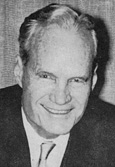
In the next in this series of articles, I take an overview of one of the major pulp publishers and their pulp heroes: Popular Publications.
Established in 1930, Popular Publications was solely a pulp publisher. Unlike others, they never got into comic books (though it was considered) or books, nor were they part of a larger publishing conglomerate. Popular was established by Harry Steeger, who had been an editor at Dell and had started some previous short-lived publications.
Popular was notable for their “weird menace” pulps, a genre they created, and this element affected all their pulp heroes to different levels. Depending on how you look at them, they are either the second or third most successful pulp publishers, and supposedly their pulps outsold Street & Smith’s so maybe they could be considered number one. This also enabled them to buy out other pulp publishers (like Munsey, and later picking up many of Street & Smith’s titles when they stopped publishing pulps). And they are one of the few hero pulp publishers that did several villain pulps. Finally, they are notable for publishing what most consider the last original pulp hero, Captain Zero.
They had a few other imprints, the most well known was Fictioneers, which was created to have a line with a lower pay rate.
Steeger shutdown the company around 1960 (tho it seems they were still publishing Railroad Magazine until 1976, when it was sold to another publisher). The company and its rights were sold to Brookside Publications in 1972, which later sold it to French publisher Hachette (one source called it “Popular Publications International”, so maybe was referring to Hachette). They later sold off their rights to Joel Frieman who established Blazing Publications in 1981, which was later renamed as Argosy Communications (in 1988). This means that their characters are not in the public domain, but are licensed. The company’s extensive records, which it kept and included the records of Munsey, was donated to a college library and serves as a research resource. More recently, Argosy sold their rights to all their works other then their major pulp heroes (Spider, Operator #5 and G-8 at least) to a new concern called Steeger Properties, which is associated with Altus Press.
Their main pulp heroes for Popular were The Spider, G-8, and Operator #5. The Spider and G-8 both started in October of 1933.
Their character pulps were:
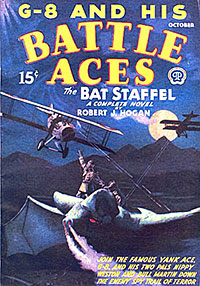 • G-8 (1933-44): G-8, the Flying Spy, was created by Robert Hogan, and was one of the rare pulp heroes that was credited to his author. G-8 was an ace & spy fighting a bizarre version of WWI that never happened. Aided by his two wingmen, Nippy Weston and Bull Martin, he fought a bizarre war against the strangest menaces thrown at them by Germany and their Asiatic allies. Some of their main foes were The Steel Mask, Grun the caveman, Doktor Chu Lung, and the worse, Herr Doktor Krueger. He lasted 110 issues. Adventure House has been reprinting their original pulp stories.
• G-8 (1933-44): G-8, the Flying Spy, was created by Robert Hogan, and was one of the rare pulp heroes that was credited to his author. G-8 was an ace & spy fighting a bizarre version of WWI that never happened. Aided by his two wingmen, Nippy Weston and Bull Martin, he fought a bizarre war against the strangest menaces thrown at them by Germany and their Asiatic allies. Some of their main foes were The Steel Mask, Grun the caveman, Doktor Chu Lung, and the worse, Herr Doktor Krueger. He lasted 110 issues. Adventure House has been reprinting their original pulp stories.
• Spider (1933-43): The Spider is nominally a Shadow clone, but that doesn’t do him justice. The first two stories were written by R.T.M. Scott, author of Aurealus “Secret Service” Smith. This Spider was more in the line of an amateur detective, though he had a spider stamp he used on the criminals he killed. With the third story, Norvell Page took over under the “Grant Stockbridge” house name and soon turned the Spider into an over-the-top vigilante hero, fighting over the top weird menace super villains. Unlike most of his covers, the Spider wore a slouch hat and domino mask, but also a fake hunchback, fright wig, and fake fangs. He laughed maniacally. His view was the only good crook was a dead crook, and littered the back alleys and crime dens with plenty of good crooks. Then made sure to stamp them with his spider sign so everyone knew who did it. G-8 outlasted him, but the Spider had more stories, with 118.
In a bizarre three-part story from 1938, the Spider had to deal with a criminal and fascist take over of New York State. An obvious warning about the Nazis and the like. Age of Aces has reprinted the whole trilogy as “The Spider vs. The Empire State.” Sanctum Books has started a new reprint series, and Girasol Collectables had one that lasted about 20 or so double-novel volumes. An unpublished 119th story was published recently by Moonstone Books, which had also published new Spider stories. Altus will now be publishing both reprints and new Spider stories.
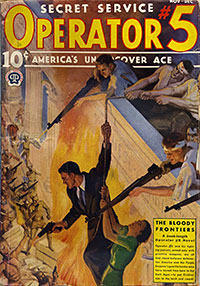 • Operator #5 (1934-39): Super spy Operator #5 fought to defend the United States from a variety of wild menaces, both foreign and domestic. The most well-known is the bizarre 13-story sequence known as the “Purple War” saga, from 1936-38. In it, we learn of the invasion, conquest and eventual liberation of the United States by a European power known as the Purple Empire. Even when the storyline was over, the next story had the U.S. still recovering. Another similar sequence started toward the end, with the villain Yellow Vulture, an allusion to Japan. Sadly, they canceled Operator #5 after 48 stories and that sequence was left unfinished. Adventure House has reprinted the Purple War stories in Pulp Review/High Adventure, but unlike G-8 or The Spider, no one has made a concerted effort to reprint the whole series. Altus will now be publishing both reprints and new Operator #5 stories. One plan is to put out the entire Purple War sage in a single hardback volume.
• Operator #5 (1934-39): Super spy Operator #5 fought to defend the United States from a variety of wild menaces, both foreign and domestic. The most well-known is the bizarre 13-story sequence known as the “Purple War” saga, from 1936-38. In it, we learn of the invasion, conquest and eventual liberation of the United States by a European power known as the Purple Empire. Even when the storyline was over, the next story had the U.S. still recovering. Another similar sequence started toward the end, with the villain Yellow Vulture, an allusion to Japan. Sadly, they canceled Operator #5 after 48 stories and that sequence was left unfinished. Adventure House has reprinted the Purple War stories in Pulp Review/High Adventure, but unlike G-8 or The Spider, no one has made a concerted effort to reprint the whole series. Altus will now be publishing both reprints and new Operator #5 stories. One plan is to put out the entire Purple War sage in a single hardback volume.
• Red Finger (1934-38): In the back of Operator #5, the counter spy Red Finger ran from 1934 to 1938. This character went after and eliminated dangerous foreign agents in a bizarre outfit. Altus Press has reprinted the complete series. See my prior posting on this character.
• Dusty Ayers (1934-35): Another bizarre series was Dusty Ayers and His Battle Birds. In this air war series created by Robert Bowen (who got credited), Dusty Ayers defended the U.S. from the sinister Fiery Eyes, who had conquered the rest of the world. When it was decided to cancel the series, Bowen actually wrapped up the storyline in the last volume. Black Dog Books has put out a volume of the first three stories, but Altus Press is now reprinting the entire series.
• Secret Six (1934-35): Robert Hogan created the unusual Secret Six, which sadly lasted only four stories. While referred to as a take-off of the popular Park Avenue Hunt Club (a group of mysterious vigilantes), the Secret Six are more a take on Doc Savage and his crew. The Secret Six are a group of innocent men with unique skills wanted for crimes, who band together to fight crime. Known only to each other by their aliases, they are led by the mysterious King. Altus Press has reprinted the complete series. Also see my posting on the series.
• Wu Fang (1935-36) and Dr. Yen Sin (1936): Trying to create a character similar to Fu Manchu, Robert Hogan created the Mysterious Wu Fang, who was opposed by Federal Agent Val Kildare. He only lasted seven issues, shutting down when the Sax Rohmer estate complained. Donald Keyhoe was tapped to try again with Dr. Yen Sin, who was opposed by Michael Traile. Traile, due to a botched operation as a child, could not sleep, so had to meditate. He only lasted three issues. Altus Press is now reprinting these two series
• Seekay (1937-38): Paul Ernst, creator of The Avenger, created the interesting, but short-lived Seekay. This detective was faceless, and wore a mysterious plastic mask. He only took cases which interested him. Altus Press has reprinted all the stories, so see my posting about him.
• Captain Satan (1938): Popular retitled Strange Detective Mysteries (which was where Seekay first appeared) for Captain Satan, another different crime fighter. Cary Adair led his crew as Captain Satan, almost like a privateer against crime. This was dangerous work, and some of them didn’t make it. Altus Press has reprinted the series in two volumes, and I’ll be doing a review soon.
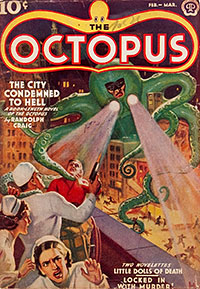 • The Octopus/Scorpion (1939): Popular tried again with a villain pulp with The Octopus. It lasted one issue, to be retitled/revamped as The Scorpion. In both, he (they?) was opposed by probably the strangest pulp hero ever: the Skull Killer. I’d love to see someone reprint the two in a flip book format (hint, hint).
• The Octopus/Scorpion (1939): Popular tried again with a villain pulp with The Octopus. It lasted one issue, to be retitled/revamped as The Scorpion. In both, he (they?) was opposed by probably the strangest pulp hero ever: the Skull Killer. I’d love to see someone reprint the two in a flip book format (hint, hint).
• Captain Combat (1940): Put out by Fictioneers, Captain Combat was a short-lived air war hero. He fought the Nazis as an American member of the Royal Air Force. Age of Aces has reprinted the complete series.
• Captain V (1942-43): Another short-lived air war character was Captain V, also published by Fictioneers. He also fought the Nazis. He was notable for being thought killed in combat, and due to surgery to fix a destroyed face, no one knew what he looked like, but one man in Washington, D.C. He led a special group of four called the V Aces. No one has yet to reprint these stories.
• Captain Zero (1949-50): Popular seemed to have shutdown all their pulp heroes in 1942/43, apparently due to the wartime paper shortage. But later in 1949, they (actually through their imprint Recreational Reading Co.) put out Captain Zero. He was created by pulp scribe G.T. Fleming-Roberts (creator of Green Ghost and Diamondstone, and writer on Secret Agent X and others). Nerdy Lee Allyn was Captain Zero, who turned invisible midnight to dawn. He could not control it, and the problem was his glasses gave him away if he wore them. So he had to wear contact lens. Thin clothes disappeared as well. Altus Press has just released their complete reprint of this character.
So there are the pulp heroes of Popular Publications. Sadly, there are a lot of short-lived characters, but all are interesting. I may have left out some, as I’m not up on their western, air-war, or G-man characters. Age of Aces has been putting out a lot of air-war stuff from several publishers, including Popular, so check them out and check out the others as well.
UPDATED 1/2018

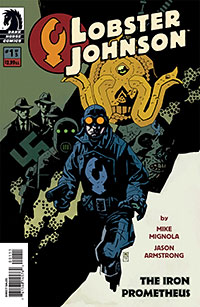
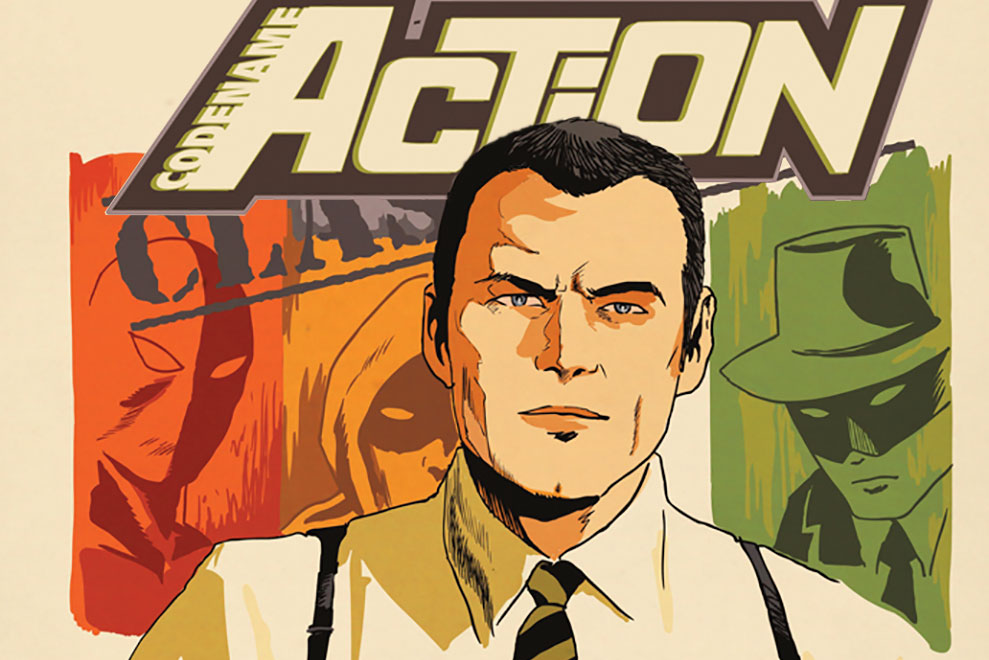
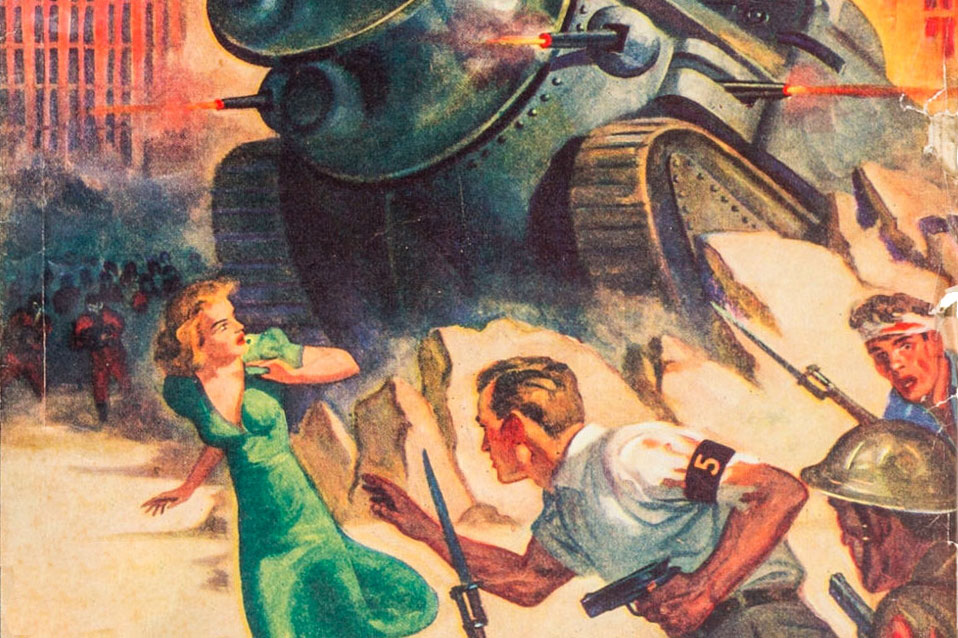
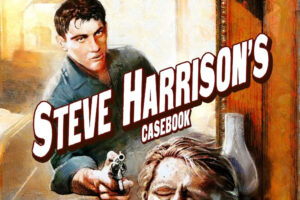
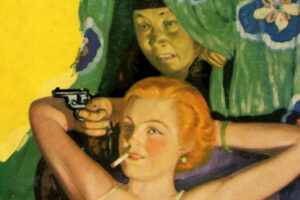
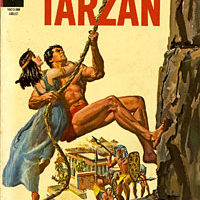
“The Octopus/Scorpion (1939): Popular tried again with a villain pulp with The Octopus. It lasted one issue, to be retitled/revamped as The Scorpion. In both, he (they?) was opposed by probably the strangest pulp hero ever: the Skull Killer. I’d love to see someone reprint the two in a flip book format (hint, hint).”
I’ve been thinking this for years. If done in a semi-replica format (just the title novels and the original covers); if not the flip-book format, then perhaps as “The Skull Killer Collection”, with a newly-commissioned cover – we really need to see someone’s dramatic painterly portrayal of The Skull Killer.
Other than that one underground comic from 1975 by Gary Terry (http://offthebeatenpanel.blogspot.com/2012/06/skull-killer-pulp-mania-inc-1975.html), I’m surprised this character hasn’t been exploited by the new pulp writers — or did Popular (now under the ownership of Argosy Communications) manage to renew and maintain copyrights on even its most obscure publications like this one? I’d love to see a story in which the Green Lama met the Skull Killer.
AFAIK, Popular kept the rights to ALL their characters, even obscure ones like the Skull Killer.
I know that Moonstone was planning on using Skull Killer as part of their “Return of the Originals” stuff. In the preview comic they did, they included Skull Killer, along with a picture of him. As yet, nothing has happened with him.
It’s a great character, more schizophrenic in nature than even the more radical pulp vigilantes. So much could be done with the Skull Killer. Too bad about “The Return of The Originals” — I was very excited for this when the titles were announced and first began appearing. Then after only a handful of books, the entire line vaporized. So sad.